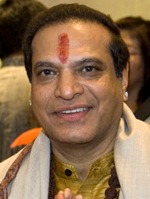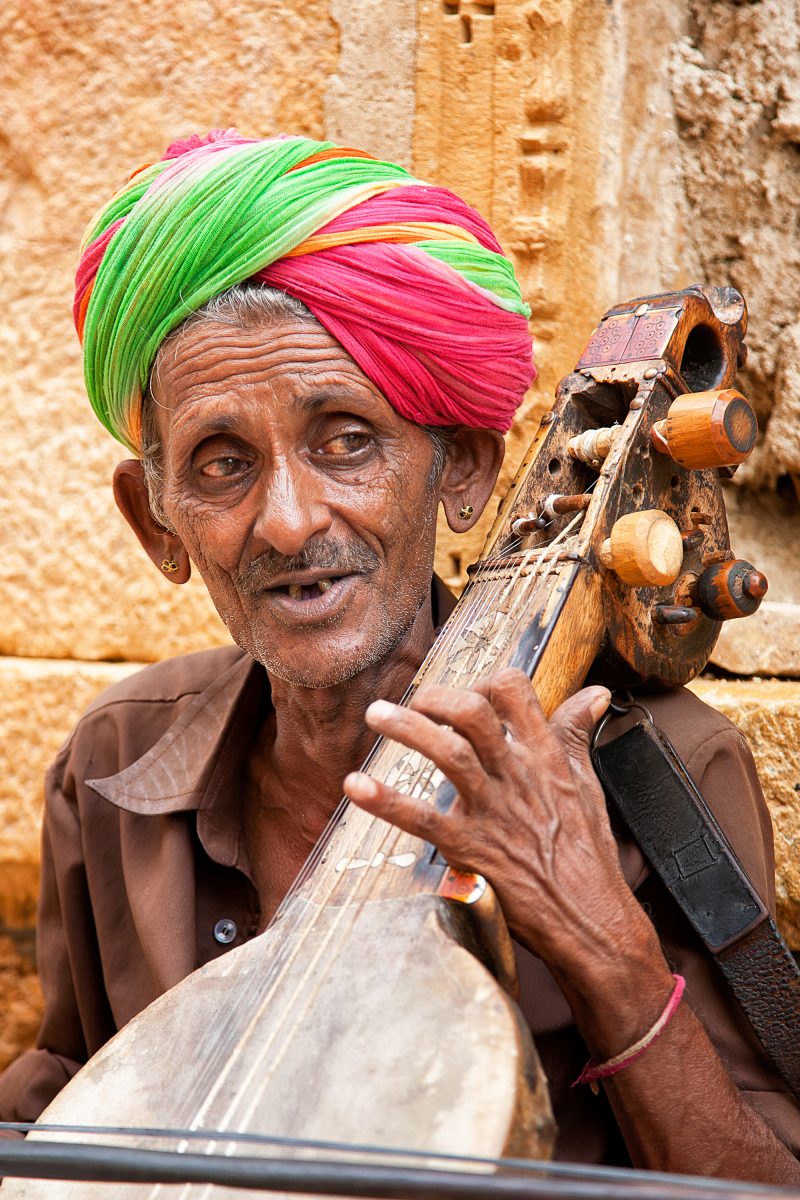ARCHIVES: CULTURE: Seasonal Ragas – A Music Primer
Jaisalmer, India- August 12, 2011: Unidentified indian musician playing sitar, a plucked stringed instrument widely used in Indian classical music, on the streets of Jaisalmer. (iStock photo)

The classical music of India is not only a great art form it is also a deep and effective spiritual practice or sadhana. Indian classical music (of which the Raga is a basic form) has been developed over hundreds of years to reflect and to be completely in tune with the Divine and with the Divine’s manifestation in nature. Mother Nature, with her many moods that change not only with the seasons but even with the times of day and night, may be considered a reflection of a Higher Reality, or even as a projection or manifestation of God. When we sing or play the ragas upon which the classical music of India is based, we tune ourselves to a specific aspect or quality of God. When that tuning is perfected, that part of the Divine Reality manifests through our music.
The sages of ancient India realized through their meditation what modern scientists are only now beginning to learn, that nature, on the most fundamental level, is made up of the vibration of energy. Sound is also produced by energy vibration and, according to the sacred texts of India, God created the material world by first setting into motion the primordial sound vibration called Nada Brahma. From the expansion of this root vibration, all other energies and their corresponding manisfestations were generated. The world, then, is actually a great collection of sound vibration.
A raga is a set pattern of ascending and descending notes or swaras which, when sung or played correctly, resonate exactly with the sound vibration of some aspect of God as manifest in material reality. Because of this resonance, a raga can both generate the mood of some particular quality of nature, such as a season or a time of day, and also effect the material world, causing real changes to happen in the physical environment. Of course, to produce a raga perfectly is difficult, but when through our sincere practice we achieve this, we can truly change the material world. The power of sound is so great that, in ancient times, very adept people could even use sound vibration (through mantra) as weapons of war.
Each raga has a very specific mood or personality that generates a particular aspect of God or Nature. For example, Raag Miyan ki Malhar was created by the great musician Miyan Tansen, court musician to Emperor Akbar, to perfectly reflect the mood and qualities of the tropical rainy season – the fresh green hills, the sweet songs of birds, the newly sprouted crops and the promise of a rich harvest to come. This raga’s vadi note Ma reflects a gentle awakening of nature, and the large gaps in the aroha or ascending scale created by the absence of Ga and Dha give a feeling of the sprouting of new life, while the complete or sampoorna descending scale of avaroha, along with the raga’s use of Sa as samvadi, keeps this raga very grounded in the natural world. There are several other features of this raga that give it its distinct personality but, to fully appreciate this, one must listen to the raga.
When Miyan Tansen sang Raag Miyan Ki Malhar in the darbar of the great Emperor Akbar, he actually caused rain to fall. How was this possible? For Tansen, music was more that just an art form; it was his way to God. When he sang, he completely lost consciousness of the world around him, because he offered his music as a prayer to God rather than as a performance for an audience. Tansen transported his music from the Emperor’s darbar to the court of God Himself, where through his music he tuned his own intention to the will of God so perfectly that his will became God’s will. Because everything in the world is produced through the vibration of energy, Miyan Tansen was able, through his intense devotion, to generate rain by producing the vibration of his perfectly-tuned Raag Miyan ki Malhar.
This is how classical music of India is meant to be practiced and presented, with deep sincerity and devotion to God and to music practice. Because music can link us so profoundly with the Divine, its practice can lead us to moksha, or liberation. Real music practice is meant to be a lifelong spiritual practice, not just a small hobby incorporated into an otherwise busy life.
Once one of my students asked me whether it is possible to practice an evening raga in the morning, as this was the only time he was free to practice. I told him, that although each raga is associated with a special time of day and with a specific season, any raga can be practiced at any time if it is practiced as a sadhana or way to God, and if it is presented as a prayer.
This is the most important quality of music practice, and such practice will definitely reveal the deepest meaning of any raga to a sincere and humble student.

Habib Khan is a well-known sitarist based in the San Francisco Bay Area.


